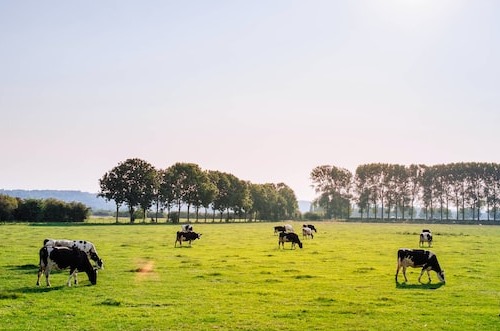W27: Dairy Update

In W27 in the dairy landscape, Tridge’s data analysis indicates that Polish skimmed milk powder (SMP) prices declined over the past three weeks due to a rise in milk production, resulting in increased availability for SMP production. The SMP price benchmark fell from USD 3.82/kg three weeks ago to USD 2.59/kg on July 7. Throughout 2023, milk production in Poland has consistently increased compared to 2022. The continuous flow of milk supplies for dairy commodities suggests that prices may remain low even during the summer months. The United Kingdom (UK) dairy industry is facing challenges as the milk farmgate price falls below the production costs, raising concerns about small dairy farms' viability. This is due to global oversupply, decreased demand for dairy products, and falling agricultural commodity prices, which have not yet translated to lower retail prices.
Experts predict a decrease in United States (US) milk production in 2023, following a successful year in 2022. US dairy production remained steady at 102.7 million metric tons (mmt) in 2022, an increase of 0.1% YoY. The dairy herd number stabilized at 9.4 million heads, while milk yields slightly increased to almost 11 mt per cow per year. Meanwhile, milk prices rose to USD 587.17/mt, up 37% YoY. US dairy exports reached a record high of USD 10 billion, up 25% in value, with significant increases registered in milk powder (+10%), lactose (+16%), and cheese (+12%) exports. US dairy shipments were mainly destined for Mexico at USD 2.4 billion (+36%) and Canada at USD 1.1 billion (+22%). Dairy imports also grew by 25% in value to USD 5.8 billion and 12% in volume. However, the beginning of 2023 was marked by a decrease in milk production. According to the United States Department of Agriculture (USDA), US 2023 milk production may decline because of reduced livestock numbers, with competition also intensifying in the global market due to increased supplies from New Zealand and the European Union (EU).
Lastly, the Brazilian milk market is expected to register a milk supply increase in Q3-23, driven by import advances and the slow production recovery compared to the 2022 low levels. Although weather effects impacted Q1-23 Brazilian milk production, the arrival of the southern crop and lower feed costs are anticipated to support production recovery. Producer margins have reached their highest level in the last four years, with indicators showing margins of USD 9.65/cow/day in May-23, boosted by lower feed costs and high producer prices in Q2-23. Imports have surged by 90% in the first five months of 2023 compared to the same period in 2022, driven by high domestic prices and a stronger Brazilian Real. Brazilian milk imports are expected to remain firm in Q3-23 due to lower global prices, a stronger Brazilian Real, and an improved macroeconomic environment. Supply issues in Argentina are being monitored, but weak domestic demand in the neighboring country is expected to ensure sufficient availability for dairy exports to Brazil.





